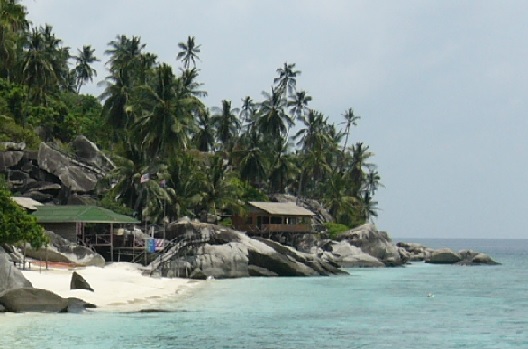What determines the price direction of an asset? In a relatively free market, supply and demand balance determines the price direction. You have more supply than demand then the prices tend to move down, you have more demand than the supply then the prices tend to move up. HDB resale flat prices moved up in the last decade because the demand exceeded the supply due to various reasons: economic growth, increase in PR approvals, reduced number of new HDB flats and low interest rates on mortgages between 2000 and 2010. Now some of these factors are changing direction:
More BTO units ahead. Since the introduction of BTO units in 2001, HDB decreased the output of flats to around 8,000 units per annum in the last decade from the average of 25,700 units per annum of 1990s. This was in response to the over-supply of HDB flats but resulted in a supply cut-back which did not match with the demand. In the recent years many BTO projects got several times more demand than the supply. This made many couples looking for a home in resale market which also did not have enough flats due to lower number of new flats in the first half of the 2000s.
This was the hottest issue in GE 2011 and in response the government increased the release of new HDB flats to 22,000 for 2011. And the New Minister of National Development, Khaw Boon Wan, announced in new MND blog that he has ordered HDB to temporarily start building ahead of order since there is a backlog of demand. Increase in the number of new HDB flats will draw significant demand from the HDB resale market since many new weds would now have a chance to grap new flats with subsidized prices.
Interest rates. The last great money printing period of FED is about to end this June which was supposed to jump start the economy and reduce the unemployment. Well as expected, the only thing it could jump start was excessive speculation and since now US and Europe needs to cope with huge public debt and major Asian economies (especially China) are trying to reduce their trapped savings in US dollar, the interest rates will go up. Current interest rates are the main factor which makes severely unaffordable flats with prices 5 or 6 times the median income look "affordable".They were artificially kept low by Hedonist Western societies in the last decade to avoid the pain of their financial mistakes. This game will end soon and when it ends, the interest rates and monthly mortgage installments will go up which will reduce the demand for properties in all segments.
More BTO units ahead. Since the introduction of BTO units in 2001, HDB decreased the output of flats to around 8,000 units per annum in the last decade from the average of 25,700 units per annum of 1990s. This was in response to the over-supply of HDB flats but resulted in a supply cut-back which did not match with the demand. In the recent years many BTO projects got several times more demand than the supply. This made many couples looking for a home in resale market which also did not have enough flats due to lower number of new flats in the first half of the 2000s.
This was the hottest issue in GE 2011 and in response the government increased the release of new HDB flats to 22,000 for 2011. And the New Minister of National Development, Khaw Boon Wan, announced in new MND blog that he has ordered HDB to temporarily start building ahead of order since there is a backlog of demand. Increase in the number of new HDB flats will draw significant demand from the HDB resale market since many new weds would now have a chance to grap new flats with subsidized prices.
Just days into his new job as National Development Minister, Mr Khaw Boon Wan (picture) has instructed the Housing and Development Board (HDB) to build flats "ahead of demand" - a significant change in policy from the "Build To Order" (BTO) approach which has been in place for the past 10 years.
Mr Khaw's announcement coincided with HDB's launch of six BTO projects - the largest number launched at once. In addition, he confirmed that the number of BTO units this year would be increased from 22,000 to 25,000 units, by bringing forward projects scheduled for early next year.Income ceiling for new HDB flats. There are strong signals from the government that the first time HDB buyers income ceiling will be raised from 8,000 SGD per month to 10,000 SGD per month. Raising the ceiling will make many couples eligible to apply for BTO. Currently these couples do not have any other choice then to go to resale HDB or private property market. Once they have the option, demand for HDB resale flats will be reduced.
Source: HDB will build flats 'ahead of demand': Khaw
Interest rates. The last great money printing period of FED is about to end this June which was supposed to jump start the economy and reduce the unemployment. Well as expected, the only thing it could jump start was excessive speculation and since now US and Europe needs to cope with huge public debt and major Asian economies (especially China) are trying to reduce their trapped savings in US dollar, the interest rates will go up. Current interest rates are the main factor which makes severely unaffordable flats with prices 5 or 6 times the median income look "affordable".They were artificially kept low by Hedonist Western societies in the last decade to avoid the pain of their financial mistakes. This game will end soon and when it ends, the interest rates and monthly mortgage installments will go up which will reduce the demand for properties in all segments.
Number of PR approval per annum is decreasing and will not increase soon. After steadily increasing from average of 35,000 approvals per year for 2001-2004 to its peak of 79,200 for 2008, it went down to 29,000 approvals for 2010. Many were expecting that decline in PR approvals would be a temporary trend until 2011 General Elections and after the elections trend would reverse. But during the election period, a significant number of Singaporeans made it clear that they are not happy with the current influx level of foreigners and it is very likely that the government will continue the downward trend in response to the sentiment on the ground.
Number of Singapore PRs approved per year (2001 - 2010) |
Disclaimer
This blog article is to provide general information only and should not be treated as an invitation to buy or sell any property or as sales material. Users of this report should consider this report as a one of the many factors in making their investment decision. Users should make reference to other sources of information and specific investment advice to obtain a more objective view of the property market. Asia Singapore shall not be responsible for losses suffered.










